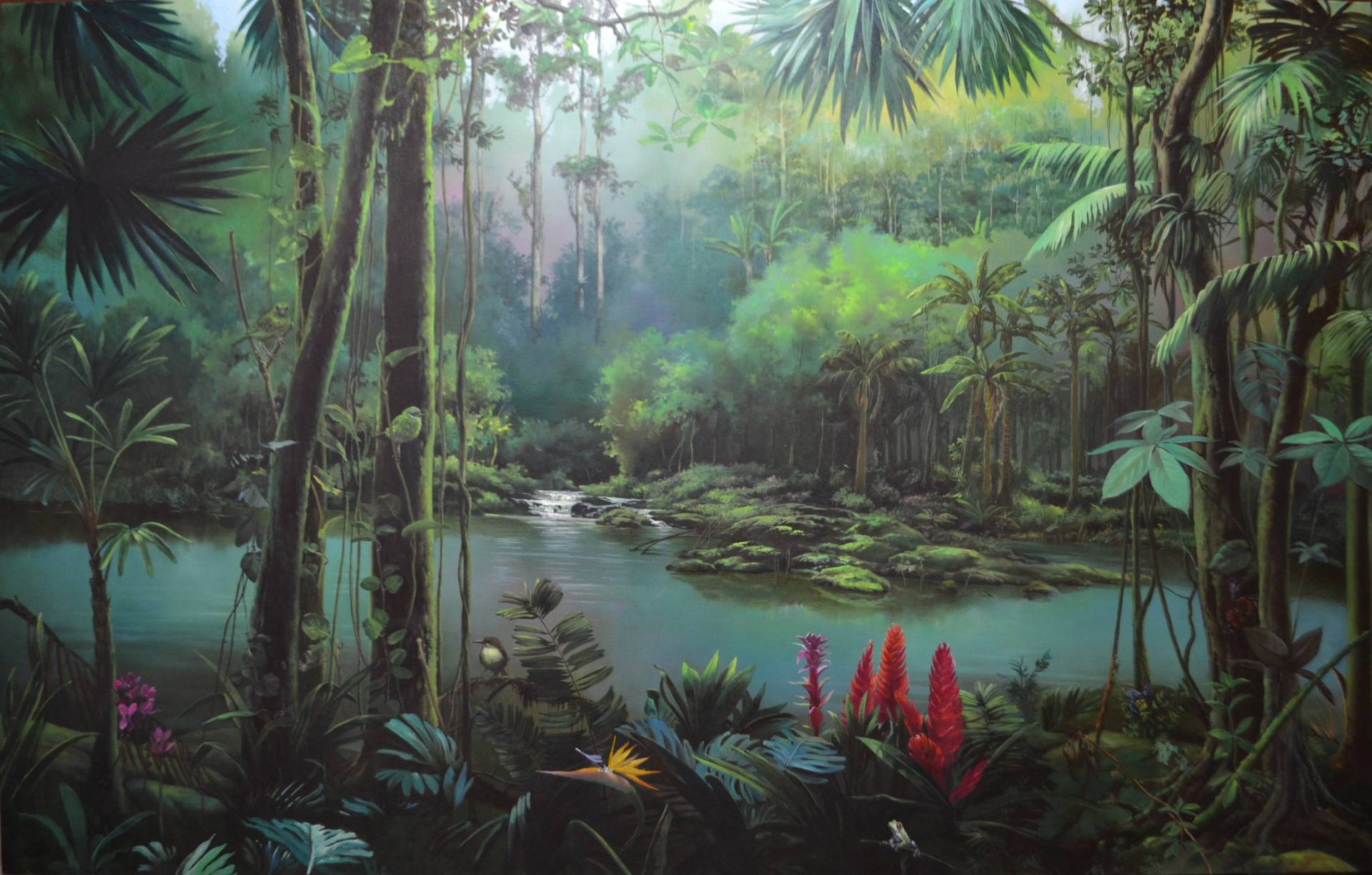
Jungle painting Vlad Tasoff, Original oil on canvas, 2014, This painting had been done by Vlad Tasoff after travel to the Ecuadorian rainforest.
This picture filled with the numerous hidden details – butterflies, birds, various insects living in rainforest.
The word Jungle originates from the Sanskrit word jangala (Sanskrit: जङ्गल), meaning uncultivated land. Although the Sanskrit word refers to dry land, it has been suggested that an Anglo-Indian interpretation led to its connotation as a dense “tangled thicket” while others have argued that a cognate word in Urdu did refer to forests The term is prevalent in many languages of the Indian subcontinent, and the Iranian plateau, where it is commonly used to refer to the plant growth replacing primeval forest or to the unkempt tropical vegetation that takes over abandoned areas.One of the most common meanings of jungle is land overgrown with tangled vegetation at ground level, especially in the tropics. Typically such vegetation is sufficiently dense to hinder movement by humans, requiring that travelers cut their way through. This definition draws a distinction between primary forest and jungle, since the under-storey of tropical forests is typically open of vegetation due to a lack of sunlight, and hence relatively easy to traverse.[Jungles may exist within, or at the borders of, tropical forests in areas where the forest has been opened through natural disturbance such as hurricanes, or through human activity such as logging. The vegetation that springs up following such disturbance of is dense and impenetrable and is a ‘typical’ jungle. Jungle also typically forms along forest margins and along stream banks, once again due to the greater available light at ground level.Because jungles occur on all inhabited landmasses and may incorporate numerous vegetation and land types, the wildlife of jungles cannot be defined and consists of the biota of the land type and region.
